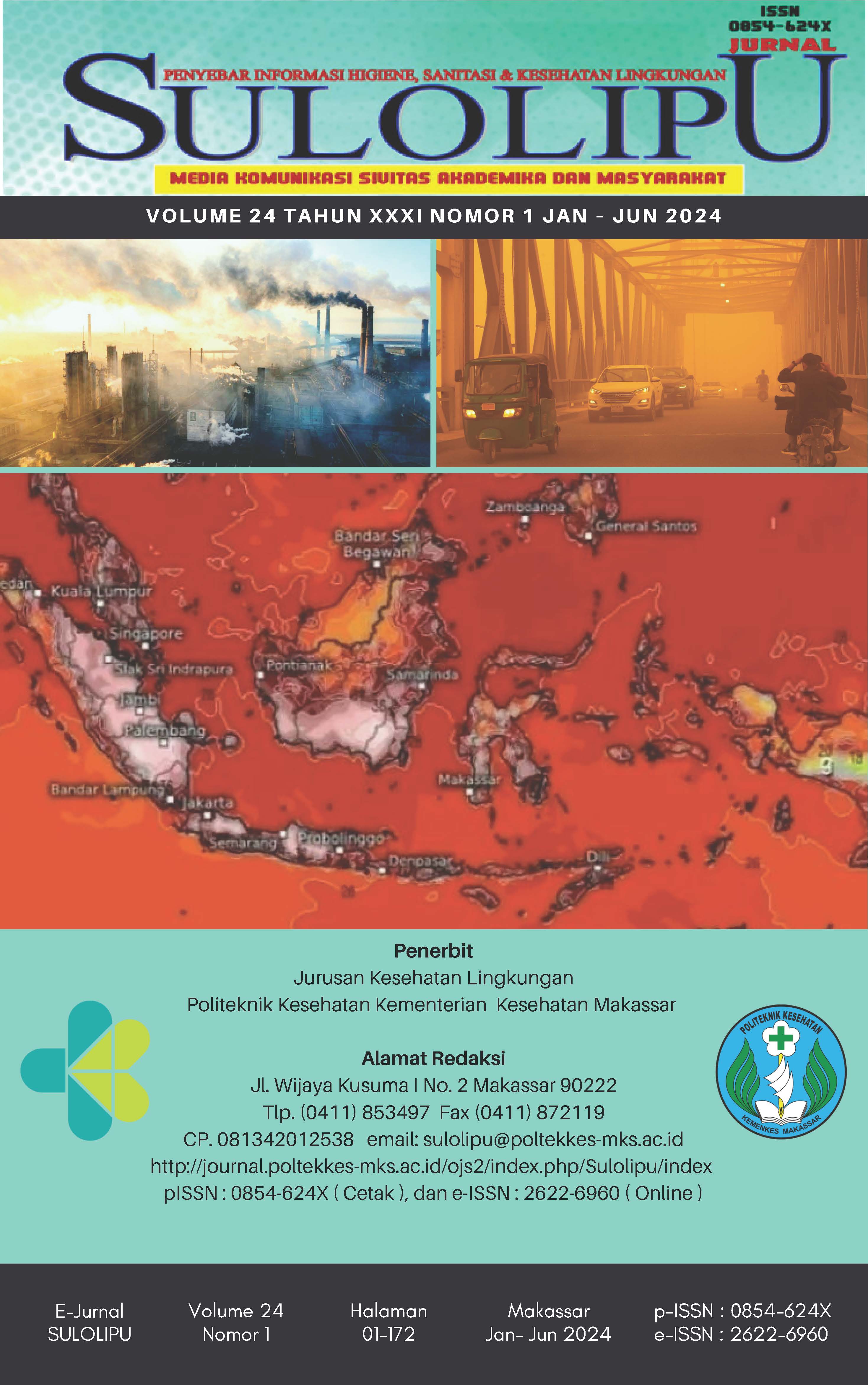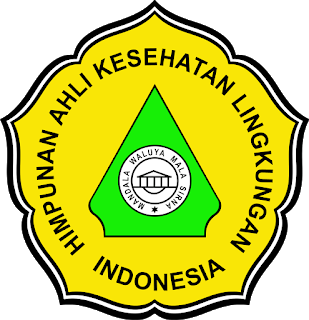Sanitation of Slaughterhouse with Fly Density in Gantarang Subdistrict, Bulukumba Regency
DOI:
https://doi.org/10.32382/sulo.v24i1.483Keywords:
Lalat, Kandang Ayam, Kebersihan Kandang, Limbah, DesinfeksiAbstract
Chicken coop sanitation is an effort to prevent disease by eliminating or managing environmental factors related to the chain of disease transmission. Sanitation is very important because if sanitation is problematic it will have an impact on the environment of the cage and the animals in the cage. The aim of the study was to determine the relationship between the sanitation of broiler chicken coops and the density of flies in Gantarang District, Bulukumba Regency. The type of research used in this research is analytical research, with a cross sectional approach with a total sample of 43 and analyzed using the chi square test. The results showed that there was a relationship between cage cleanliness and fly density level p = 0.000 < α = 0.05 and X2hit 25,077 X2tabel 3,841, there was a relationship between waste management and fly density level p = 0.000 <α= 0.05 and X2 tabel 43,000 > X2tabel 3.841, there is a relationship between disinfection and the density of flies p = 0.000 < α = 0.05 and X2hit 43,000 > X2 tabel 3.841, there is a relationship between humidity and the density of flies p = 0.000 <α= 0.05 and X2 hit 32.434 < X2 tabel 3.841. The conclusion of this study is that there is a relationship between cage cleanliness, waste management, disinfection, and humidity with fly density. It is hoped that broiler breeders will improve cage sanitation in terms of cage cleanliness, waste management, and disinfection.
Keywords: Flies, Chicken Coop, Cage Cleanliness, Waste, Disinfection and humidity.
References
Anggie, et al. (2022). Hubungan Keberadaan Kandang Ayam dengan Kepadatan Lalat di Kecamatan Kawedanan Magetan. (Online) https://jiip.stkipyapisdompu.ac.id/jiip/index.php/JIIP/article/view/846/814 (Diakses Pada Tanggal 12 April 2023)
Ago. (2017). Analisis Tingkat Kepaatan Lalat Di Peternakan Ayam Potong Di Desa Padang Jawi Kecamatan Bunga Mas Kaupaten Bengkulu Selatan.(Online).http://repository.poltekkesbengkulu.ac.id/2294/1/AGO%20BOOM.pdf (Diakses Pada Tanggal 10 April 2023)
Denai Wahyuni, M. (2021). Entomologi dan Pengendalian Vektor. (Online) https://www.google.co.id/books/edition/Buku_Ajar_Entomologi_Dan_Pengendalian_Ve/bFk-EAAAQBAJ?hl=id&gbpv=1&dq=Entomologi+dan+Pengendalian+Vektor.&printsec=frontcover (Diakses Pada Tanggal 13 Desember 2022)
Fatmasari, F. N. (2018). Hubungan Sanitasi Kandang Ayam Pedaging Dengan Kepadatan Lalat Di Desa Bedrug Kecamatan Pulung Ponorogo. Stikes Bhakti Husada Mulia Madiun. (Online) http://repository.stikes-bhm.ac.id/326/1/FATIKA%20NUR%20FATMASARI%20%28201403015%29.pdf (Diakses Pada Tanggal 4 Desember 2022)
Notoatmodjo, S. (2018). Metodologi Penelitian Kesehatan. Jakarta : Pt Rineka Cipta.
Nurhikmayani. (2022). Survey Indeks Kepadatan Lalat Di Rumah Pemotongan Hewan (Ayam) Di Kabupaten Pangkep. Politeknik Kesehatan Makassar.
Rasman., Z. (2022). Survey Indeks Kepadatan Lalat di Rumah Pemotongan Hewan (Ayam) di Kabupaten Pangkep. Sulolipu : Media Komunikasi Sivitas Akademika Dan Masyarakat, 22. https://journal.poltekkes-mks.ac.id/ojs2/index.php/Sulolipu/article/view/3052/1971 (Diakses Pada Tanggal 4 Januari 2023)
Peraturan Menteri Pertanian Republik Indonesia Nomor 31/Permentan/OT.140/2/2014, (2014).
Permenkes Nomor 50 Tahun 2017 Tentang Standar Baku Mutu Kesehatan Lingkungan Dan Persyaratan Kesehatan Untuk Vektor Dan Binatang Pembawa Penyakit Serta Pengendaliannya, (2017).
Sucipto, C. D. (2011). Vektor Penyakit Tropis. Goysen Publishing
Syamsuddin S, (2018). Gambaran Limbah Padat Rumah Pemotongan Ayam (RPA) Terhadap Tingkat Kepadatan Lalat Di Kelurahan Bara Barayya Timur Kota Makassar. 18 No. 2, 148. (Online) https://journal.poltekkes-mks.ac.id/ojs2/index.php/Sulolipu/article/view/1146/649 (Diakses Pada Tanggal 2 Desember 2022)
Downloads
Published
How to Cite
Issue
Section
PDF (Bahasa Indonesia) downloaded: 848



















